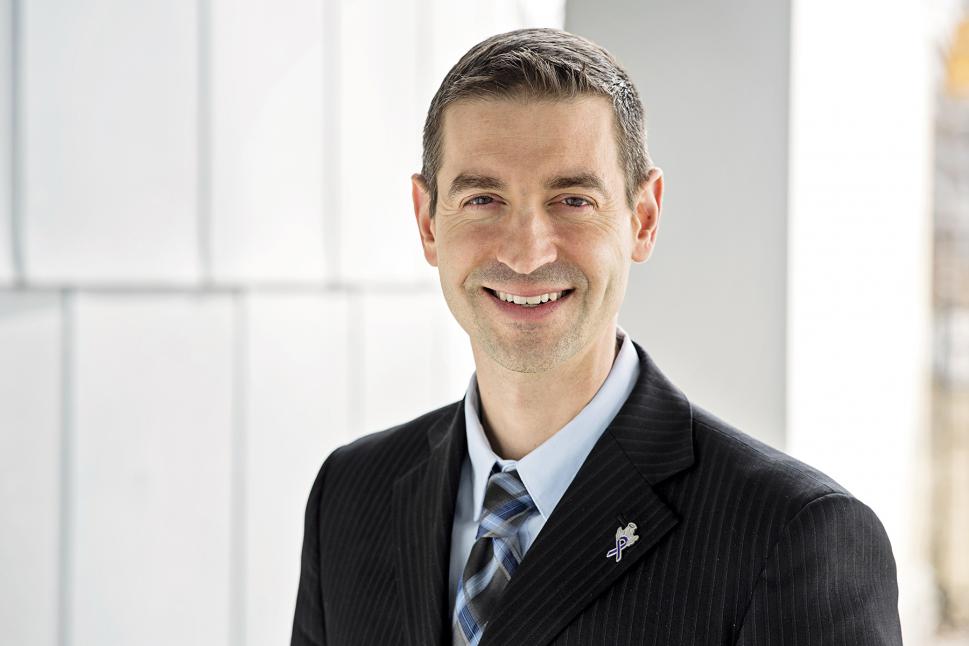The Royal is part of an innovative platform that promises to bring mobile mental health and wellness to a new level.
It taps into a popular social media platform that is used by tens of millions of people in North America: Twitter.
TryCycle Data Systems, an Ottawa-based company, designed a smartphone-based platform that augments traditional therapy by facilitating a strong digital connection between therapists and their clients.
Clients receive regular prompts to answer questions related to their health status. On the other end, a therapist receives real-time reports and an overview of clients’ health between appointments. The goal is to help therapists anticipate when a person is in need, and be proactive about extending support to prevent a relapse or crisis situation.
A similar goal has been driving the research of Dr. Zachary Kaminsky over the past two years.
Kaminsky is the DIFD Mach-Gaensslen Chair in Suicide Prevention Research at The Royal’s Institute of Mental Health Research (IMHR), affiliated with the University of Ottawa.
Kaminsky developed an algorithm called SAIPH (Suicide Artificial Intelligence Prediction Heuristic). SAIPH analyzes speech patterns in public Twitter data to help predict suicide risk.
TryCycle has begun evaluating the addition of SAIPH to its platform to enhance the connection between client and care provider.
TryCycle approached Kaminsky late last year. John MacBeth, the CEO of TryCycle Data Systems, says his team found Kaminsky’s algorithm to be “eloquent and agile,” and particularly well-suited for their digital clinical decision aid, as it gives them more data to work with.
“We’re trying to use data as dialogue, to create conversations between two people…. A human being takes the data, interprets the data, and decides to act on the data or not. That’s the simple recipe,” says MacBeth. “We are creating a sense of connectedness by attempting to replace stigma, loneliness, and shame, with relationship.”
Clients have the option to opt-in to TryCycle as well as the SAIPH component, although they’ll have to have a Twitter account. (By some estimates, Twitter has approximately 6.88 million active users in Canada alone, and almost 60 million in the U.S.)
As SAIPH has the ability to comb through a user’s Twitter archive, Kaminsky predicts it will be a helpful tool for therapists who are meeting their clients for the first time.
Traditionally it takes two or three sessions before a clear picture starts to emerge of a client’s mental health, but since SAIPH can analyze historical Twitter data, it can give therapists a sense of their client’s mental health even before their first meeting.
“Because our AI can go back in time and score things that happened with the person in the last year or the last six months, it gives a visual profile of their periods of stress,” says Kaminsky.
SAIPH can quickly identify clients with a higher distress profile, or highlight a period of “peak stress” that might be helpful to discuss at a therapy session.
Kaminsky will be using the data that comes from TryCycle to see how the system works with clients in the real world.
“From my perspective, this partnership with TryCycle is fast-forwarding our research efforts a number of years,” says Kaminsky.
For the duration of COVID-19 crisis, TryCycle Data Systems is sharing their platform free of charge. They’re seeing a spike in demand as mental health care practitioners manage their caseloads from their home offices or kitchen tables.


